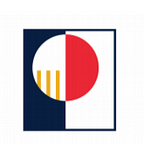5 Art Forms that are Updating Ancient Techniques
By Jack Neary
It’s awe-inspiring to behold a modern master in an ancient craft like sculpture or portraiture, but there’s an extra frisson of creative electricity when an artist takes an established form and bends it to their vision. It shocks us out of our expectations and reminds us of the potential of artistic expression and the myriad ways there are to create.
From paper collage to computer code portraiture, here are five artists updating ancient techniques with singular creations.
Paper Quilling
Often associated with the Japanese tradition of origami, the practice of paper folding in the far east dates back to medieval times. From there, it traveled west through Europe, and during the Renaissance period, paper quilling — the art of rolling or shaping and then gluing paper together in a decorative design — raised these simple paper folds into complex portraits and collages.
Today, in a mix between portraiture, sculpture, collage, and drawing, Yulia Brodskaya updates the form once again by manipulating paper into stunningly realistic 3-D creations. In speaking about her journey to this unique form, she said, “Now I draw with paper instead of on it.”
Bicycle Chain Sculpture
When sculpture comes up in conversation, it’s hard to avoid iconic pieces such as Venus de Milo or The Thinker. And while these marble and bronze masterpieces are owed their due, modern sculpture continues to innovate by incorporating exciting new found materials. Sculptures have always ranged broadly in type and material — from bas-relief wall carvings to monumental statues of clay and metal — so it’s no surprise that contemporary sculptors continue to experiment with the materials that speak best to their vision.
See Young-Deok gives us one such example with his incredible sculptures created using only bike chains. He explains a little more about the metaphor of his material: “We are interlocked and running like parts of a giant machine. Just like its components, we hang in there day after day as a gray man living in the periphery…The chains in my work are fetters. The fetters are all about our contemporaries’ complicated, forced relationships and cravings for materials. I want to show, through my works, the portraits of our time where personal thoughts and lives are ignored.”
Coded Portraiture
Portraiture likely dates back to prehistoric times, and it is the rulers and gods of ancient civilizations like Egypt and Greece that populate the oldest surviving works. Renaissance art also features the lofty subjects we associate with the early form — Louis XIV, Pope Innocent X, and of course, the Mona Lisa.
But Espen Kluge, a Norwegian artist and programmer, doesn’t believe you need noble roots or even a realistic face to be the subject of a portrait. “Alternatives” is a series of portraits of everyday people that are manipulated using the Javascript programming language. Kluge’s algorithm turns straightforward portraits into computer-generated art that anonymizes his subjects.
In his artist statement, Kluge explains “My vision for the project was to generate beautiful and interesting portraits that tell their own story, and to find a dynamic and organic form, avoiding the typical ‘linearness’ of computer-generated art.”
Suspended Sculpture
Suspended sculpture likely started with two devices still popular today: wind chimes and mobiles. The first evidence of the former dates to 3000 B.C. in southeast Asia, and modern mobiles take their inspiration from practices that include a centuries-old Finnish decoration meant to ensure a good crop.
Today, Cornelia Konrads uses land as her canvas and natural matter as her materials to suspend sculptures on a much larger scale. According to her website, “What Konrads thematicizes in her works are interim states, moments of an irritating and fascinating indecision. Those states in which Zeno’s paradoxes become reality: the arrow that never reaches its target, Achilles who cannot manage to succeed in overtaking the tortoise.”
Anamorphic Illusion
Anamorphosis is a distorted projection that requires the viewer to occupy a specific vantage point to view a recognizable image. While artistic in display, it draws on the sciences of geometry and optics for its execution.
It’s typically been used in painting and other traditional art forms (such as Varini’s painting above or even further back in Leonardo da Vinci’s sketches), but what is believed to be the world’s largest anamorphic illusion (80m by 20m) was recently created on curved LED digital signage in Seoul, South Korea.
Jun Lee, the business development director at the creative agency responsible for the installation, said, “We want to create overwhelming experiences. Waves are beautiful and dynamic in themselves but we chose them as our subject because they evoke feelings of comfort — which is much needed now.”
